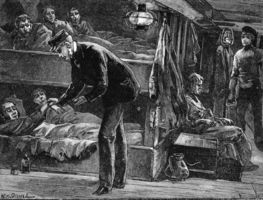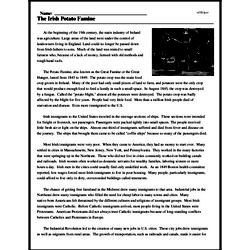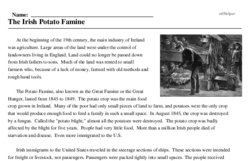The Irish Potato Famine
At the beginning of the 19th century, the main industry of Ireland was agriculture. Large areas of the land were under the control of landowners living in England. Land could no longer be passed down from Irish fathers to sons. Much of the land was rented to small farmers who, because of a lack of money, farmed with old methods and rough hand tools.
The Potato Famine, also known as the Great Famine or the Great Hunger, lasted from 1845 to 1849. The potato crop was the main food crop grown in Ireland. Many of the poor had only small pieces of land to farm, and potatoes were the only crop that would produce enough food to feed a family in such a small space. In August 1845, the crop was destroyed by a fungus. Called the "potato blight," almost all the potatoes were destroyed. The potato crop was badly affected by the blight for five years. People had very little food. More than a million Irish people died of starvation and disease. Even more immigrated to the U.S.
Irish immigrants to the United States traveled in the steerage sections of ships. These sections were intended for freight or livestock, not passengers. Passengers were packed tightly into small spaces. The people received little fresh air or light on the ships. Almost one-third of immigrants suffered and died from fever and disease on the journey. The ships that brought them came to be called "coffin ships" because so many of the passengers died.




